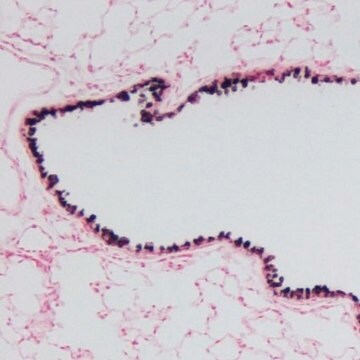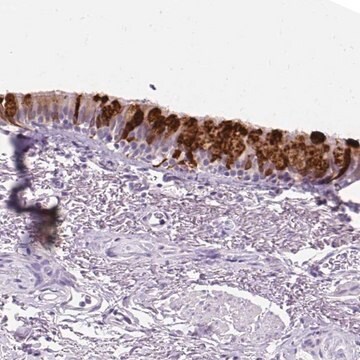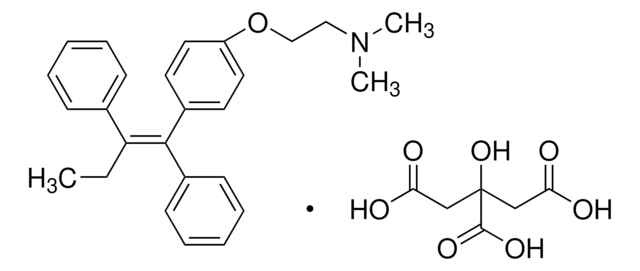ABS1673
Anti-Uteroglobin
serum, from goat
Sinônimo(s):
Clara cell phospholipid-binding protein, CCPBP, Clara cells 10 kDa secretory protein, CC10, PCB-binding protein, Secretoglobin family 1A member 1, Blastokinin
About This Item
Produtos recomendados
fonte biológica
goat
Nível de qualidade
forma do anticorpo
serum
tipo de produto de anticorpo
primary antibodies
clone
polyclonal
reatividade de espécies
mouse
reatividade da espécie (prevista por homologia)
rat (based on 100% sequence homology)
técnica(s)
immunofluorescence: suitable
immunohistochemistry: suitable
western blot: suitable
nº de adesão NCBI
nº de adesão UniProt
Condições de expedição
ambient
modificação pós-traducional do alvo
unmodified
Informações sobre genes
mouse ... Scgb1A1(22287)
rat ... Scgb1A1(25575)
Descrição geral
Especificidade
Imunogênio
Aplicação
Immunofluorescence Analysis: A 1:1,000 dilution from a representative lot detected Uteroglobin in mouse lung tissue. (Courtesy of Dr.Barry Stripp at Cedars-Sinai Medical Center, Los Angeles, CA).
Immunohistochemistry Analysis: A representative lot detected Uteroglobin in adult mice alveoli (Rawlins, E.L., et. al. (2009). Cell Stem Cell. 4(6):525-34).
Signaling
Qualidade
Western Blotting Analysis: A 1:500 dilution of this antibody detected Uteroglobin in 10 µg of mouse lung tissue lysate.
Descrição-alvo
forma física
Armazenamento e estabilidade
Outras notas
Exoneração de responsabilidade
Não está encontrando o produto certo?
Experimente o nosso Ferramenta de seleção de produtos.
Código de classe de armazenamento
12 - Non Combustible Liquids
Classe de risco de água (WGK)
WGK 1
Certificados de análise (COA)
Busque Certificados de análise (COA) digitando o Número do Lote do produto. Os números de lote e remessa podem ser encontrados no rótulo de um produto após a palavra “Lot” ou “Batch”.
Já possui este produto?
Encontre a documentação dos produtos que você adquiriu recentemente na biblioteca de documentos.
Nossa equipe de cientistas tem experiência em todas as áreas de pesquisa, incluindo Life Sciences, ciência de materiais, síntese química, cromatografia, química analítica e muitas outras.
Entre em contato com a assistência técnica






